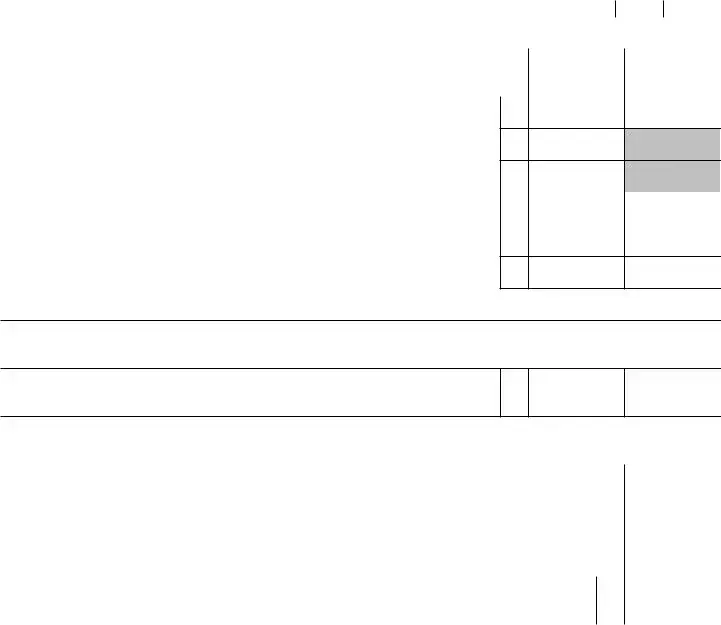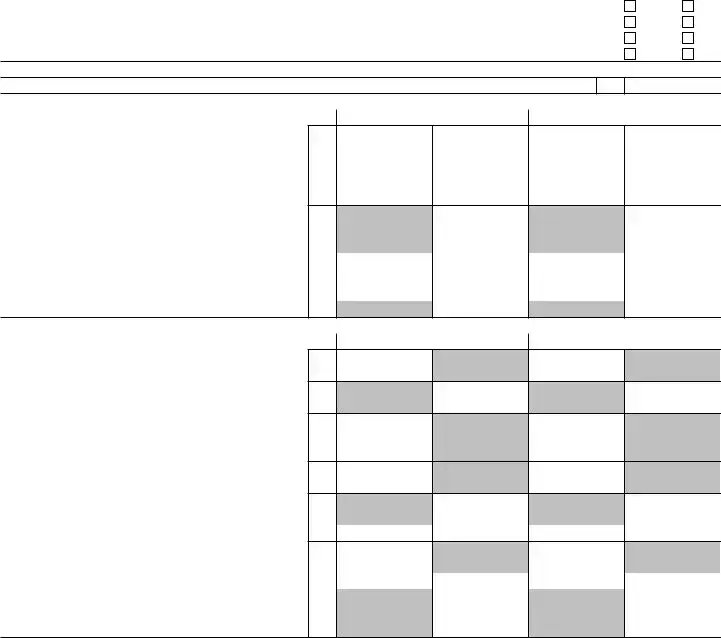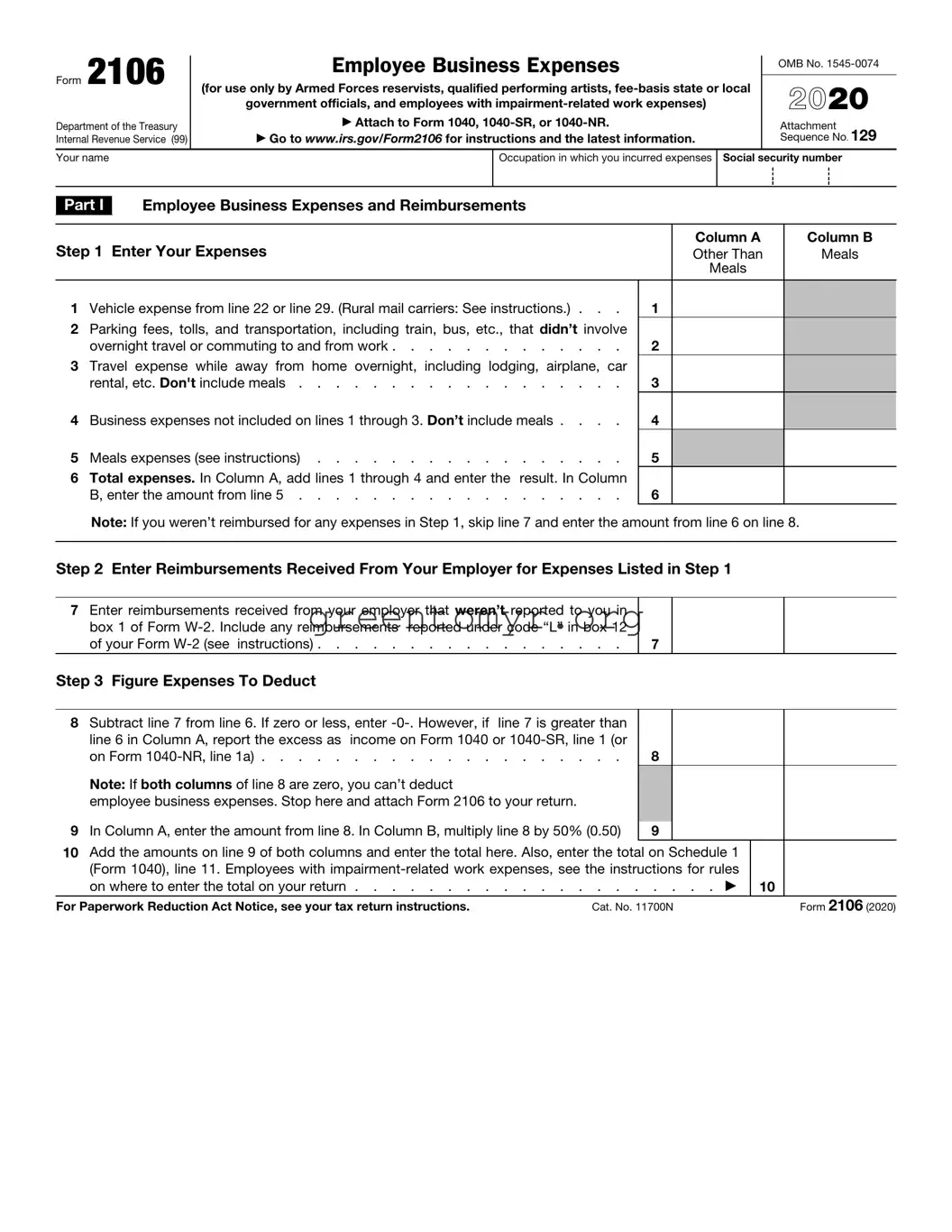
Form 2106 |
|
Employee Business Expenses |
|
|
|
OMB No. 1545-0074 |
|
|
|
|
|
|
|
|
|
|
|
|
|
|
|
|
|
|
(for use only by Armed Forces reservists, qualified performing artists, fee-basis state or local |
|
2020 |
|
|
|
|
government officials, and employees with impairment-related work expenses) |
|
Department of the Treasury |
|
▶ Attach to Form 1040, 1040-SR, or 1040-NR. |
|
|
|
Attachment |
Internal Revenue Service (99) |
|
▶ Go to www.irs.gov/Form2106 for instructions and the latest information. |
|
Sequence No. 129 |
Your name |
|
|
|
|
Occupation in which you incurred expenses |
Social security number |
|
|
|
|
|
|
|
|
|
|
|
Employee Business Expenses and Reimbursements |
|
|
|
|
|
Part I |
|
|
|
|
|
|
|
|
|
|
|
|
|
|
Step 1 Enter Your Expenses |
Column A |
|
Column B |
Other Than |
|
Meals |
|
|
|
|
|
|
Meals |
|
|
|
|
|
|
|
|
1 Vehicle expense from line 22 or line 29. (Rural mail carriers: See instructions.) . . . |
1 |
|
|
|
|
2Parking fees, tolls, and transportation, including train, bus, etc., that didn’t involve
overnight travel or commuting to and from work |
2 |
3Travel expense while away from home overnight, including lodging, airplane, car
|
rental, etc. Don't include meals |
3 |
|
|
4 |
Business expenses not included on lines 1 through 3. Don’t include meals . . . . |
4 |
|
|
5 |
Meals expenses (see instructions) |
5 |
|
|
6Total expenses. In Column A, add lines 1 through 4 and enter the result. In Column
B, enter the amount from line 5 |
6 |
Note: If you weren’t reimbursed for any expenses in Step 1, skip line 7 and enter the amount from line 6 on line 8.
Step 2 Enter Reimbursements Received From Your Employer for Expenses Listed in Step 1
7Enter reimbursements received from your employer that weren’t reported to you in box 1 of Form W-2. Include any reimbursements reported under code “L” in box 12 of your Form W-2 (see instructions) . . . . . . . . . . . . . . . . .
Step 3 Figure Expenses To Deduct
8 |
Subtract line 7 from line 6. If zero or less, enter -0-. However, if line 7 is greater than |
|
|
|
line 6 in Column A, report the excess as income on Form 1040 or 1040-SR, line 1 (or |
|
|
|
on Form 1040-NR, line 1a) |
8 |
|
|
Note: If both columns of line 8 are zero, you can’t deduct |
|
|
|
employee business expenses. Stop here and attach Form 2106 to your return. |
|
|
|
|
|
|
9 |
In Column A, enter the amount from line 8. In Column B, multiply line 8 by 50% (0.50) |
9 |
|
10Add the amounts on line 9 of both columns and enter the total here. Also, enter the total on Schedule 1 (Form 1040), line 11. Employees with impairment-related work expenses, see the instructions for rules
on where to enter the total on your return |
. . . . . . . . . . . . ▶ |
10 |
For Paperwork Reduction Act Notice, see your tax return instructions. |
Cat. No. 11700N |
Form 2106 (2020) |

|
|
|
|
|
|
|
|
|
|
Form 2106 (2020) |
|
|
|
|
|
|
Page 2 |
|
|
Vehicle Expenses |
|
|
|
|
|
|
Part II |
|
|
|
|
|
|
|
|
|
|
|
|
|
Section A—General Information (You must complete this section if you are |
|
(a) |
Vehicle 1 |
|
(b) Vehicle 2 |
claiming vehicle expenses.) |
|
|
|
|
|
|
|
|
11 |
Enter the date the vehicle was placed in service |
11 |
/ |
/ |
|
/ |
/ |
12 |
Total miles the vehicle was driven during 2020 |
12 |
|
miles |
|
|
miles |
13 |
Business miles included on line 12 |
13 |
|
miles |
|
|
miles |
14 |
Percent of business use. Divide line 13 by line 12 |
14 |
|
% |
|
|
% |
15 |
Average daily roundtrip commuting distance |
15 |
|
miles |
|
|
miles |
16 |
Commuting miles included on line 12 |
16 |
|
miles |
|
|
miles |
17 |
Other miles. Add lines 13 and 16 and subtract the total from line 12 . . |
17 |
|
miles |
|
|
miles |
18 |
Was your vehicle available for personal use during off-duty hours? |
Yes |
No |
19 |
Do you (or your spouse) have another vehicle available for personal use? |
Yes |
No |
20 |
Do you have evidence to support your deduction? |
Yes |
No |
21 |
If “Yes,” is the evidence written? |
Yes |
No |
Section B—Standard Mileage Rate (See the instructions for Part II to find out whether to complete this section or Section C.)
22Multiply line 13 by 57.5¢ (0.575). Enter the result here and on line 1 . . . . . . . . . . . .
Section C—Actual Expenses
(a) Vehicle 1 |
(b) Vehicle 2 |
23 |
Gasoline, oil, repairs, vehicle insurance, etc. . |
23 |
|
|
|
|
24a |
Vehicle rentals |
24a |
|
|
|
b |
Inclusion amount (see instructions) . . . . |
24b |
|
|
|
c |
Subtract line 24b from line 24a |
24c |
|
|
|
|
25Value of employer-provided vehicle (applies only if 100% of annual lease value was included on
|
Form W-2—see instructions) |
25 |
|
|
|
|
26 |
Add lines 23, 24c, and 25 |
26 |
|
|
|
|
27 |
Multiply line 26 by the percentage on line 14 . |
27 |
|
|
|
|
28 |
Depreciation (see instructions) |
28 |
|
|
|
|
29 |
Add lines 27 and 28. Enter total here and on line 1 |
29 |
|
|
|
|
Section D—Depreciation of Vehicles (Use this section only if you owned the vehicle and are completing Section C for the vehicle.)
(a) Vehicle 1 |
(b) Vehicle 2 |
30 |
Enter cost or other basis (see instructions) . . |
30 |
31Enter section 179 deduction and special allowance
32Multiply line 30 by line 14 (see instructions if you claimed the section 179 deduction or special
allowance) |
. . . . . . . . . . . . |
32 |
33Enter depreciation method and percentage (see
34Multiply line 32 by the percentage on line 33 (see
instructions) |
34 |
|
|
|
|
35 Add lines 31 and 34 |
35 |
|
|
|
|
36Enter the applicable limit explained in the line 36
|
instructions |
36 |
|
|
|
|
37 |
Multiply line 36 by the percentage on line 14 . |
37 |
|
|
|
|
38 |
Enter the smaller of line 35 or line 37. If you |
|
|
|
|
|
|
skipped lines 36 and 37, enter the amount from |
|
|
|
|
|
|
line 35. Also enter this amount on line 28 above |
38 |
|
|
|
|
Form 2106 (2020)


